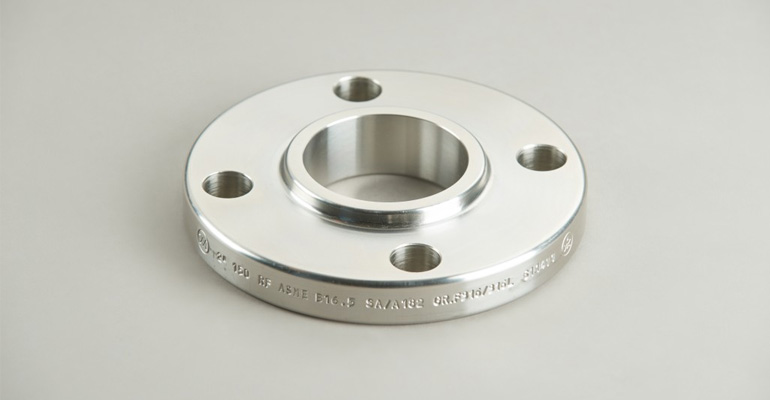Slip-On Flanges are a fundamental component in the world of pipeline systems, offering unique advantages and versatility in various industries. Whether you're an engineer, a technician, or simply curious about the mechanics of pipelines, understanding slip-on flanges is essential.
In this article, we will explore the intricacies of slip-on flanges, from their manufacturing processes to their applications and beyond.
Understanding the Types of Flanges
Slip-On Flanges Explained
Slip-on flanges, as the name suggests, are designed to slip over the end of a pipe. They are then welded on both the inside and outside to provide sufficient strength and prevent leakage. These flanges are commonly used in low-pressure systems.
Advantages of Slip-On Flanges
One of the primary advantages of slip-on flanges is their ease of installation. They are also cost-effective and versatile, making them suitable for a wide range of applications.
How Slip-On Flanges Are Manufactured
Materials Used
Slip-on flanges can be manufactured from various materials, including stainless steel slip on flange, carbon steel slip on flange, and alloy steel slip on flange, depending on the application and required strength.
Production Process
The production process typically involves cutting a flat piece of material into a round shape, followed by the creation of bolt holes and welding the flange to the pipe. Quality control is crucial in ensuring the flange's integrity.
Applications of Slip-On Flanges
In the Oil and Gas Industry
Slip-on flanges are widely used in the oil and gas sector, particularly in low-pressure systems. Their easy installation makes them a preferred choice in many pipelines.
In the Petrochemical Industry
Petrochemical plants also rely on slip-on flanges for their low-pressure systems. These flanges provide the necessary connections without compromising on safety.
The Importance of Proper Flange Installation
Safety Considerations
Proper installation is critical for the safety of any system. Errors during installation can lead to leaks and other potentially hazardous situations.
Common Installation Mistakes
Common installation mistakes include misalignment, inadequate bolt tension, and improper welding, which can compromise the integrity of the flange.
Maintenance and Inspection of Slip-On Flanges
Regular Checks and Maintenance
Regular maintenance is essential to ensure slip-on flanges continue to perform optimally. This includes inspections for signs of wear and tear.
Signs of Wear and Tear
Signs of wear and tear may include corrosion, damage to the sealing surface, and loose bolts. Identifying and addressing these issues promptly is crucial for system reliability.
Comparing Slip-On Flanges with Other Flange Types
Weld Neck Flanges
Weld neck flanges offer superior strength and are suitable for high-pressure systems, but they are more complex to install compared to slip-on flanges.
Socket Weld Flanges
Socket weld flanges provide a reliable connection for small pipe diameters but are less versatile than slip-on flanges.
Selecting the Right Slip-On Flange
Size and Pressure Class
Choosing the right slip-on flange involves considering the pipe's size and the pressure class required for the specific system.
Material Compatibility
Compatibility between the flange material and the material of the connected pipes is crucial to prevent corrosion and ensure a secure connection.
Proper Installation Steps
Pre-Installation Preparations
Before installation, thorough preparation, including cleaning, alignment, and inspection, is necessary.
Flange Alignment and Bolting
Accurate alignment and proper bolting are critical to ensure a leak-free connection.
Torquing the Bolts
Torquing the bolts to the recommended specifications is vital for a secure and reliable connection.
Challenges and Troubleshooting
Leakage Issues
Leakage is a common challenge in flange systems. Proper installation, gasket selection, and maintenance can help mitigate this issue.
Corrosion Problems
Corrosion is a significant concern, particularly in corrosive environments. Choosing the right materials and coatings can help combat this problem.
Environmental and Safety Regulations
Compliance with environmental and safety regulations is essential when working with slip-on flanges. Adherence to these standards ensures a safe and sustainable operation.
Innovations in Slip-On Flange Design
The field of slip-on flange design continues to evolve. Innovations in materials and construction methods aim to enhance their performance, durability, and ease of use.
Future Prospects and Trends
As industries evolve, so do the technologies associated with them. Slip-on flanges are likely to see further improvements, making them even more efficient and reliable.
Conclusion
Slip-on flanges are an indispensable component in various industries, offering easy installation, cost-effectiveness, and versatility. By understanding their applications, proper installation, and maintenance, you can ensure the reliability and safety of your pipeline systems.





